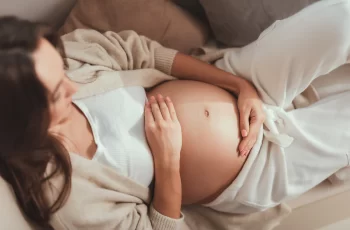
Elevating Cosmetic Safety and Championing Health-Focused Beauty Innovations
The U.S. Department of Health and Human Services (HHS) and the Food and Drug Administration (FDA) recently unveiled a groundbreaking initiative to significantly enhance consumer safety in the beauty industry. In Spring 2023, under RIN 0910-AI83, they proposed a rule aimed at eliminating the use of formaldehyde and formaldehyde-releasing chemicals in hair smoothing and straightening products[1]. This bold move is in direct response to mounting evidence. Research has consistently shown that these chemicals are not only linked to immediate health issues, such as sensitization reactions and breathing difficulties but also to long-term risks including a heightened susceptibility to cancer. This regulation is a landmark effort in shifting the industry’s focus from cosmetic product composition to prioritizing the well-being of consumers, epitomizing a shift towards more health-conscious standards within the beauty sector.
Formaldehyde and its releasing agents have long been under scrutiny for their significant role in hair products, especially those used in hair smoothing and straightening treatments like popular hair relaxers and Brazilian Blowout therapies. These chemicals, critical to the efficacy of these treatments, have raised alarms among both consumers and health regulators due to their potential health hazards.
Advocacy at the Forefront: Championing the Health and Rights of Vulnerable Women in the Beauty Industry
Amidst these pivotal regulatory shifts and growing concerns over the safety of hair products, I have positioned myself as a staunch advocate for the protection and rights of vulnerable demographics, notably Black women, who are disproportionately endangered by these toxic chemicals prevalent in beauty products. My fervent testimonies before Congress and the FDA have been integral in my quest to alter the existing paradigms. I’ve aimed to shed light on the profound dangers that formaldehyde and its releasing agents present, particularly in products tailored for Black women seeking hair straightening and smoothing solutions. My advocacy is deeply informed by an understanding of the complex interplay between societal beauty norms, health implications, and issues of racial equity. I am driven by a conviction that the pursuit of beauty should never come at the expense of health and safety.
This discussion delves into the technicalities and health implications of using formaldehyde in hair products, dissecting its applications, associated health concerns, and the regulatory landscape aiming to curb its use. By advocating for safer beauty practices and regulations, I am committed to ensuring that beauty standards evolve to be inclusive and protective of all consumers, underlining the principle that health should never be compromised for the sake of aesthetic appeal.
Hair products
Application in Hair Products
Formaldehyde and its derivatives are used in hair smoothing products because of their effective bond-altering properties. When applied to hair, these chemicals form cross-links with keratin, a protein in hair, effectively altering its structure to become straighter or smoother. This effect is usually set in place by applying heat with a flat iron or blow dryer, leading to long-lasting hair straightening results.
Impacts on vulnerable groups
Formaldehyde and formaldehyde-releasing chemicals in hair smoothing and straightening products can have a specific and significant impact on Black and brown women, due to both the prevalence of hair straightening treatments within this community and the unique hair care practices.[2] Understanding these impacts requires a consideration of cultural, health, and socio-economic factors.
Image of black and brown women
Cultural and Social Context
Hair straightening has been a common practice among Black women for decades, influenced by societal standards of beauty and professional expectations. The desire for straight hair can stem from various factors, including societal pressure to conform to Eurocentric beauty standards, professional presentation, and personal preference. As a result, Black women may be more frequently exposed to products containing formaldehyde or formaldehyde-releasing agents.
Health Concerns
The use of formaldehyde in cosmetics, especially in hair products, has raised health concerns due to its toxicological profile. Formaldehyde is a known irritant, capable of causing:
Skin irritation and allergic reactions: Prolonged skin contact can lead to dermatitis and other allergic reactions.[3]
Respiratory issues: Inhalation of formaldehyde vapors, especially in poorly ventilated areas where hair treatments are applied, can lead to respiratory discomfort, coughing, and in severe cases, asthma-like symptoms.[4]
Cancer risk: The International Agency for Research on Cancer classifies formaldehyde as a human carcinogen. Chronic exposure to formaldehyde vapors has been linked to an increased risk of certain types of cancer, particularly nasopharyngeal cancer.[5]
Image of congress
Regulatory Developments in Cosmetic Safety
In Europe, the regulatory framework governing the use of formaldehyde in cosmetic products is both strict and precautionary, reflecting a strong commitment to consumer safety. Under the EU Cosmetics Regulation (EC No. 1223/2009), the intentional addition of formaldehyde to cosmetic products is prohibited due to its classification as a carcinogen.[6] However, formaldehyde-releasing preservatives, which slowly release small amounts of formaldehyde to prevent microbial contamination, are permitted within specific limits.[7] These preservatives must be listed in Annex V of the Cosmetics Regulation, and their usage is subject to concentration restrictions to minimize exposure.[8] Cosmetic products that release formaldehyde in concentrations exceeding 0.001% for leave-on products and 0.01% for rinse-off products must clearly indicate this on their labels, alerting consumers to the presence of formaldehyde.[9] This approach balances the need for product preservation with the imperative to protect consumers from potential health risks associated with formaldehyde exposure. This dual strategy underscores Europe’s balanced approach to cosmetics regulation, prioritizing product efficacy alongside paramount consumer safety.
California’s Trailblazing Cosmetics Legislation: Pioneering Safer Standards and Consumer Protection
On the domestic front, states like California have solidified its stance as a leader in cosmetic safety by implementing groundbreaking legislation to eliminate the use of toxic chemicals in cosmetics and personal care products. This initiative, marked by the enactment of AB 2762 and SB 312 in September 2020, under Governor Gavin Newsom’s administration, has set a precedent for consumer health and safety nationwide.[10]
AB 2762 prohibits the inclusion of 24 toxic chemicals, such as mercury and formaldehyde, in cosmetics sold within the state starting January 1, 2025. By prioritizing the well-being of its most vulnerable populations, including children, communities of color, and pregnant women, California continues to lead by example, championing stricter safety standards and fostering a healthier, more informed consumer base in the cosmetics industry.
implications for the beauty industry
Implications for the Beauty Industry
This regulatory shift is likely to have a profound impact on the beauty industry, setting new standards for ingredient safety. The reduced use of formaldehyde in products and the potential for nationwide adoption of similar regulations underscore the need for ongoing collaboration between regulatory bodies, manufacturers, and consumers to prioritize safety without compromising efficacy.
Minimizing Cosmetics-Related Formaldehyde Exposure
Empowering consumers to make informed choices and minimize formaldehyde exposure in cosmetics involves several key actions. First, it’s crucial for consumers to practice diligent label scrutiny, taking the time to carefully read product labels to identify formaldehyde or its releasing agents, which may be listed under various names. This vigilance helps in avoiding products that contain these harmful chemicals. Second, considering alternative choices plays a significant role; consumers are encouraged to opt for cosmetics that are labeled as formaldehyde-free or that utilize alternative preservatives, which pose lower associated risks to health. Lastly, consumer advocacy is paramount. Supporting initiatives that call for transparent labeling practices in the cosmetics industry is essential to promote informed decision-making. Together, these steps contribute to a safer cosmetic environment, allowing consumers to protect themselves from potential health risks associated with formaldehyde exposure.
Addressing Impacts on Vulnerable Groups
The initiative to mitigate the adverse effects of formaldehyde, particularly among vulnerable populations such as Black women, involves a multi-faceted strategy aimed at elevating health consciousness within the beauty sphere. By intensifying efforts to highlight the potential health hazards associated with chemical-laden beauty products, we champion the enactment of more rigorous regulatory standards and the development of safer, more benign product formulas. Moreover, fostering an environment that celebrates the diversity of natural hair textures stands as a testament to our dedication to inclusivity and the holistic well-being of every individual. These endeavors are pivotal in ensuring that the quest for aesthetic enhancement never undermines the paramount importance of health, offering Black and brown women and other vulnerable groups access to hair care solutions that are both safe and nurturing.
Image of achievement
Evidence and Advocacy: Pioneering the Movement Toward Safer, Health-Inclusive Beauty Standards
In this pivotal moment, the beauty industry stands at the threshold of a transformative era, propelled forward by an unprecedented commitment to safety and a global call for wellness-centered beauty practices. The decisive actions undertaken by trailblazers like California and Maryland, together with Europe’s rigorous regulatory framework, mark a collective stride towards reconciling the allure of cosmetics with the paramount importance of health. This shift transcends mere product reformulation, signaling a deeper evolution within the industry’s core values — one that places well-being at the heart of beauty. As we navigate this journey, my advocacy and the empowered stance of consumers worldwide are critical catalysts driving the beauty industry towards a future where integrity, safety, and beauty are inseparable. Together, we are not just choosing safer products; we are endorsing a vision of beauty that celebrates health as its most fundamental attribute, ensuring a legacy of wellness and inclusivity for generations to come.


